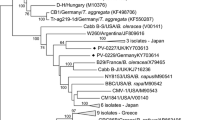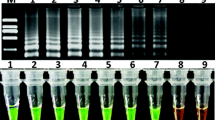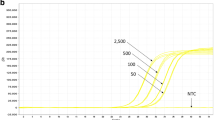Abstract
Today DNA-based techniques are very common for the detection of genetically modified organisms (GMOs) in food products. For fast and easy detection of GMOs, polymerase chain reaction (PCR) screening methods, which amplify common transgenic elements, are applied in routine analysis. These techniques do not allow differentiation between GMOs and the natural occurrence of transgenic elements, such as the 35S-promoter of cauliflower mosaic virus (CaMV) or the NOS-terminator of Agrobacterium tumefaciens, and thus may result in false-positive detection of GMOs. In this study we evaluated three different existing 35S screening systems and report the development of two new CaMV-specific PCR systems. These PCR systems based on CaMV-specific genes allow the identification of positively screened 35S food samples as naturally virus-infected products or plants. Seven food samples tested positive in routine 35S screening analysis and negative in GMO specific systems were investigated using the new virus-specific PCR systems. In all seven samples CaMV was detected.
Similar content being viewed by others
Author information
Authors and Affiliations
Additional information
Received: 26 April 1999 / Revised version: 28 June 1999
Rights and permissions
About this article
Cite this article
Wolf, C., Scherzinger, M., Wurz, A. et al. Detection of cauliflower mosaic virus by the polymerase chain reaction: testing of food components for false-positive 35S-promoter screening results. Eur Food Res Technol 210, 367–372 (2000). https://doi.org/10.1007/s002170050565
Issue Date:
DOI: https://doi.org/10.1007/s002170050565




